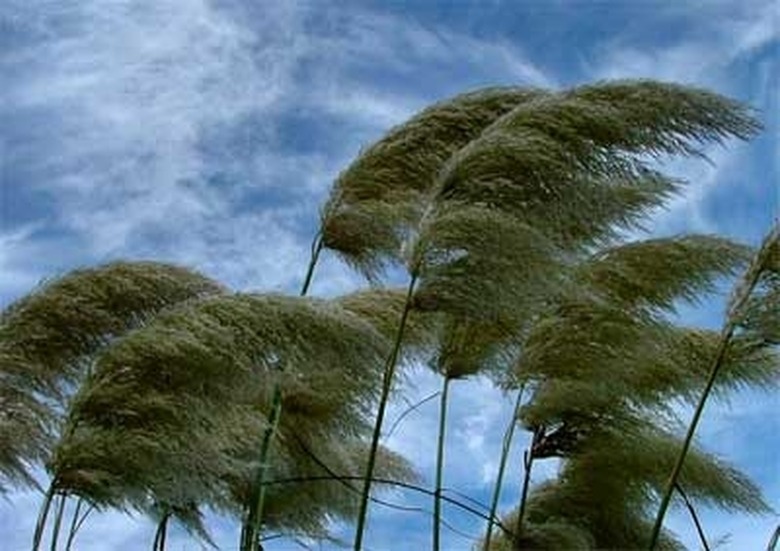The Relationship Between Pressure Gradient & Wind Speed
We may receive a commission on purchases made from links.
The pressure gradient is the change in barometric pressure over a distance. Big changes within shorter distances equals high wind speeds, while environments that exhibit less change in pressure with distance generate lower or non-existent winds. This is because higher-pressure air always moves toward air of lower pressure in an attempt to gain balance within the atmosphere. Steeper gradients result in a stronger push.
Identification
Identification
Surface weather maps depict barometric pressure with lines of equal pressure or isobars. These lines, also known as pressure contours, are normally in intervals of four millibars (mb). These contours form circles around high and low pressure systems on a map. Tightly spaced contours mean high winds. Because pressure generally decreases with height, a smoothing method is used that converts all stations to standard sea level pressure which is considered to be 1013 mb or 29.92 inches of mercury (inHg).
Mathematics of gradient
Mathematics of gradient
The high to low force that causes wind and its velocity works on synoptic scales such as those depicted on conventional surface maps. Gradients can also occur on scales much smaller than the high and low systems associated with middle-latitude systems. One example is a microburst which occurs within an individual thunderstorm. A microburst is a vertical pressure gradient caused by existing dry air beneath or entering the thunderstorm. Rain evaporates in this dry air causing cooling. Cool air is denser, thus creating higher-pressure air that plunges to the surface.
Geographic Scale
Geographic Scale
The high to low force that causes wind and its' velocity works on synoptic scales such as those depiction on conventional surface maps. Gradients can also occur on scales much smaller than the high and low systems associated with middle latitude thunderstorms. One example is a microburst which occurs within an individual thunderstorm. A microburst is a vertical pressure gradient caused by existing dry air beneath or entering the thunderstorm. Rain evaporates in this dry air causing cooling. Cool air is denser, thus creating higher pressure air that plunges to the surface.
Precise Relationship
Precise Relationship
Wind velocity is determined by pressure gradient, so what magnitude of gradient corresponds to a certain wind velocity? According to The Weather Book by Jack Williams, a "half pound per square inch pressure difference between places 500 miles apart will accelerate still air to an 80 mph wind in three hours." With experience looking at maps of a certain area, wind speed can be estimated by looking at isobar spacing. This is difficult to be precise because other factors such as friction, the Coriolis effect, and "spin out" and latitude affect speed. An example from metservice.com is "a spacing of about two degrees latitude (with straight isobars) means fresh winds about Auckland but a gale over Fiji."
Misconceptions
Misconceptions
According to an online paper from Central Michigan University it is not true that air always follows the pressure gradient force from high to low. Downward vertical motion can happen with low flowing to high. This is a result of the force of gravity simply being greater than the pressure gradient.
References
Cite This Article
MLA
Shepard, Don. "The Relationship Between Pressure Gradient & Wind Speed" sciencing.com, https://www.sciencing.com/relationship-pressure-gradient-wind-speed-5052107/. 24 April 2017.
APA
Shepard, Don. (2017, April 24). The Relationship Between Pressure Gradient & Wind Speed. sciencing.com. Retrieved from https://www.sciencing.com/relationship-pressure-gradient-wind-speed-5052107/
Chicago
Shepard, Don. The Relationship Between Pressure Gradient & Wind Speed last modified March 24, 2022. https://www.sciencing.com/relationship-pressure-gradient-wind-speed-5052107/
